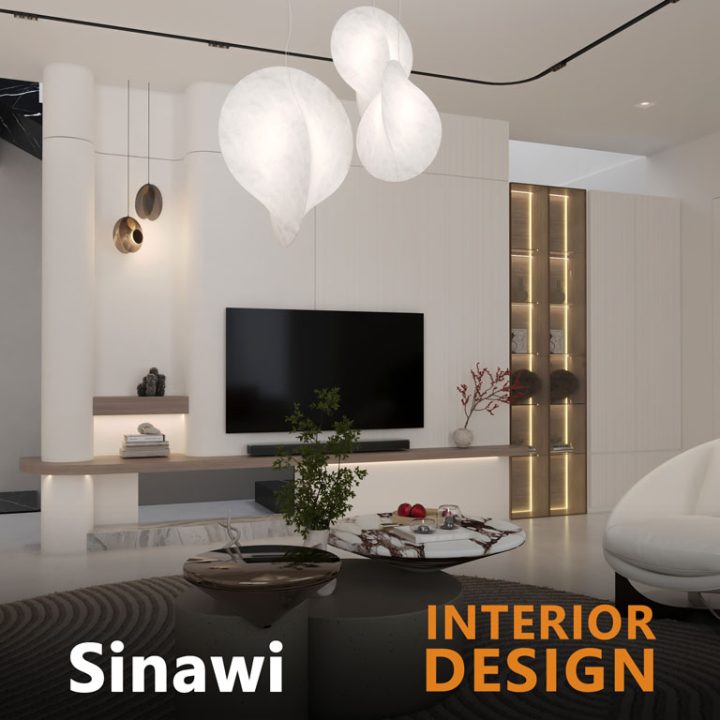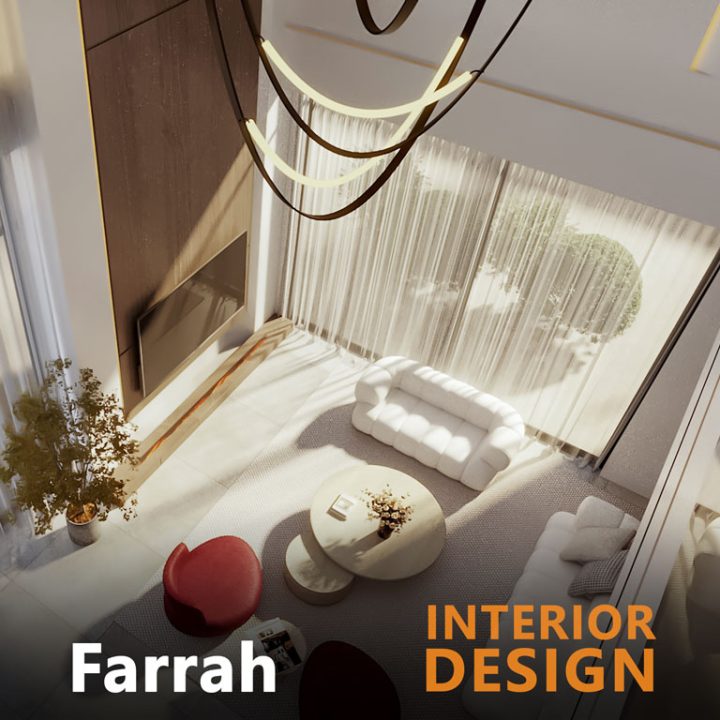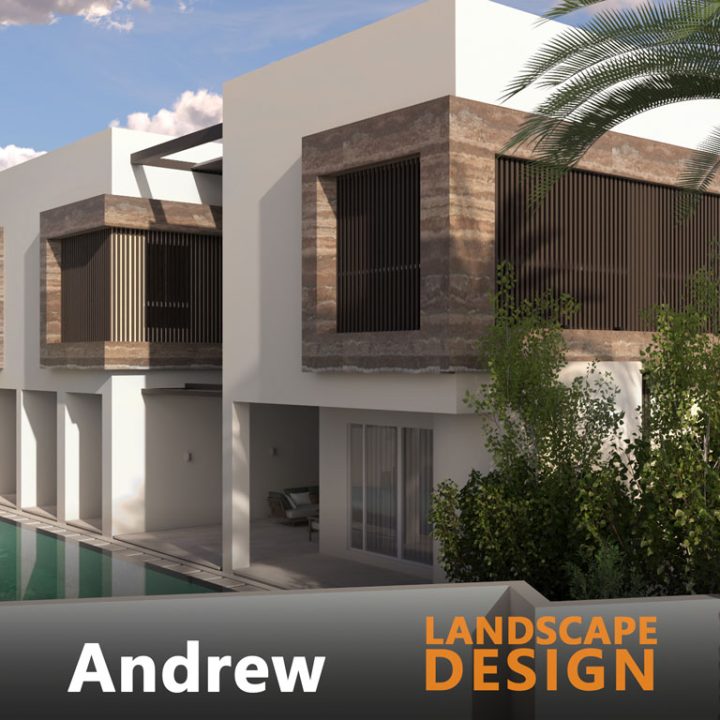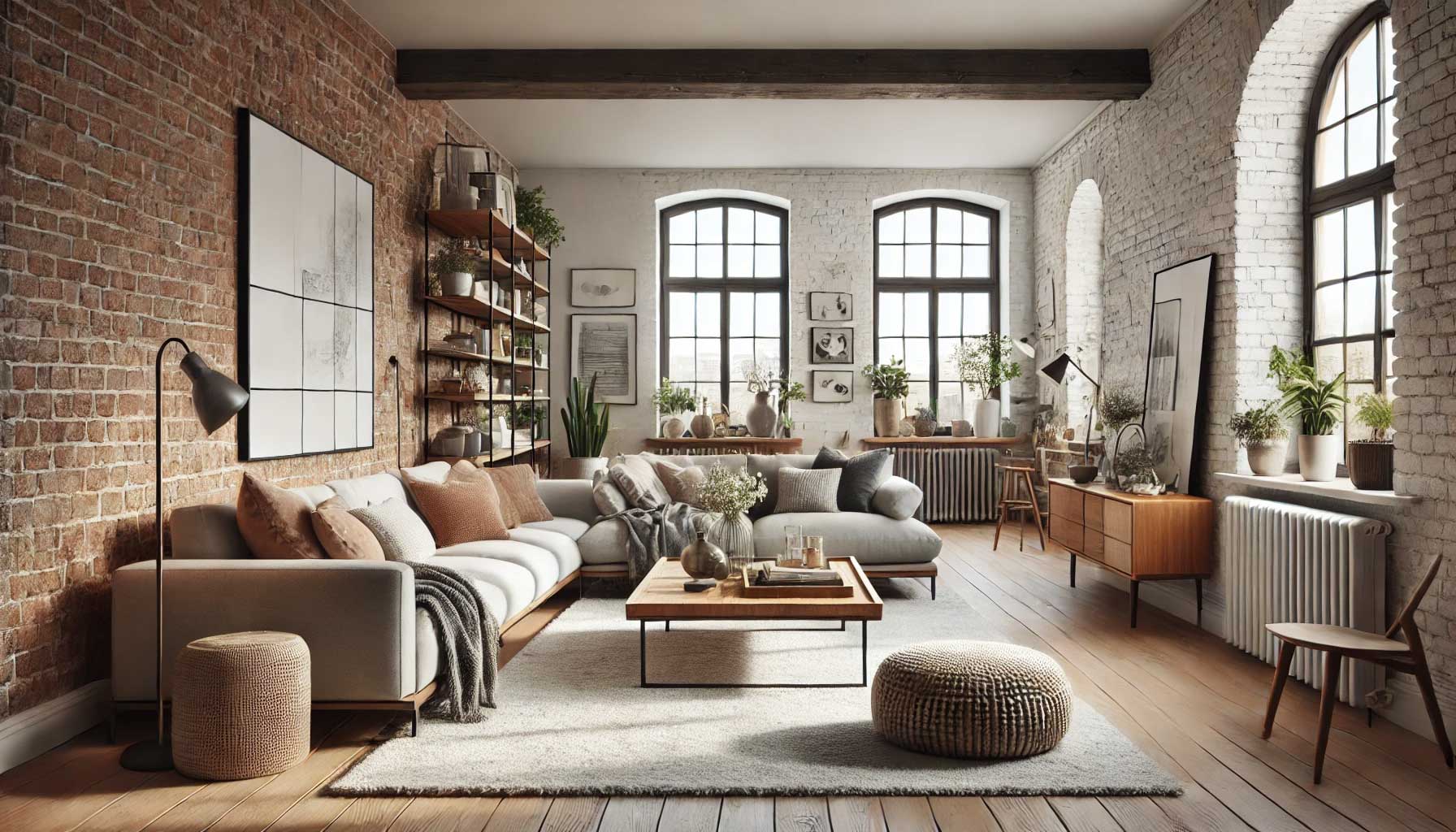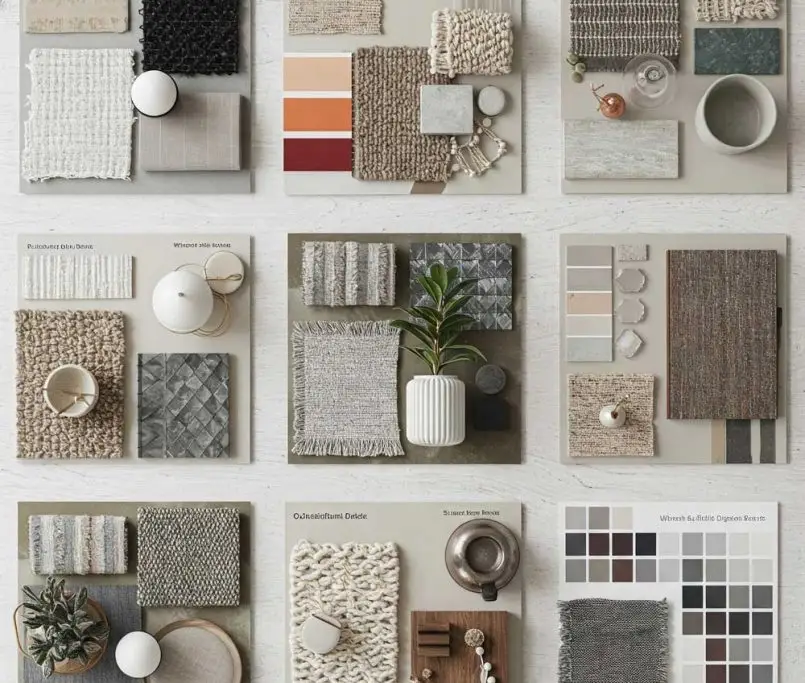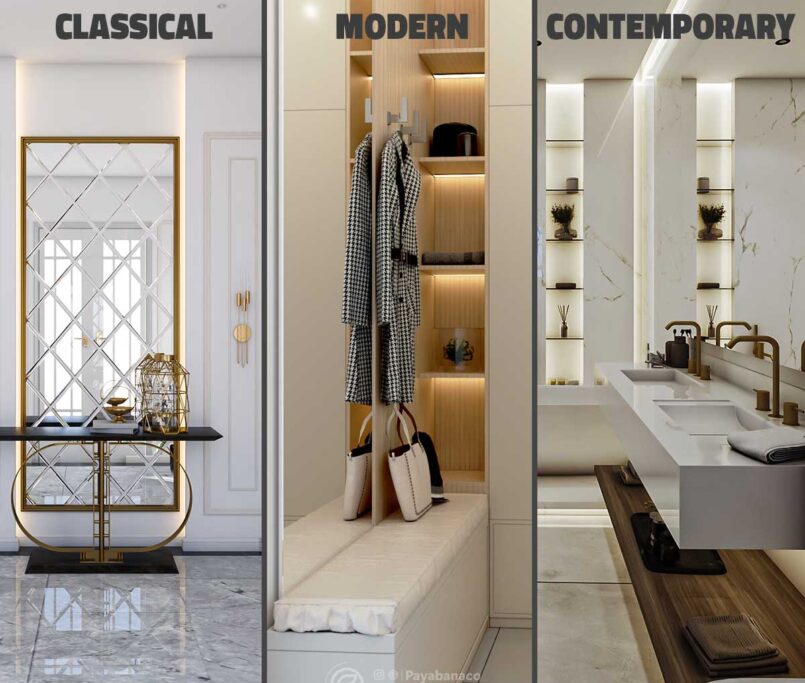The Ultimate Guide to Choosing Your Perfect Interior Design Style: Explore 12 Timeless and Trendy Styles
A Complete Guide to Choosing Your Interior Design Style and Trends
Choosing the right interior design style can be a daunting task, especially with so many different options available. Your home’s design should reflect your personal taste, lifestyle, and space needs, while also creating an environment that feels comfortable and inviting. This guide will take you through various popular design styles and trends, helping you find the best fit for your space. Whether you’re drawn to the clean lines of modern design or the eclectic charm of Bohemian décor, there’s a style for everyone. Let’s explore the different interior design styles and how you can select the one that resonates with you.
1. Understanding the Basics of Interior Design
Before diving into specific design styles, it’s essential to understand the fundamentals of interior design. Interior design is more than just choosing furniture and colors; it’s about creating a harmonious and functional space. Key elements that define interior design styles include:
- Color Palettes: The colors that dominate the space set the tone of the design. Some styles focus on neutrals, while others embrace bold, vibrant hues.
- Materials: Different styles use materials like wood, metal, stone, or fabrics to bring a specific texture or aesthetic to the room.
- Furniture and Layout: The shape, size, and arrangement of furniture play a significant role in defining a style. From clean, sleek lines in modern design to more intricate, ornate pieces in traditional designs, furniture sets the foundation.
When choosing a design style, consider the space you’re working with and how you use it daily. Do you need a formal dining room for entertaining, or would an open-plan kitchen be more practical? How much natural light does the space receive, and which colors or textures would enhance it? These factors, along with your personal taste, will influence your choice of style.
2. Modern Interior Design Style
Modern interior design is characterized by simplicity, clean lines, and a minimalist approach. It emphasizes function over form, with a focus on creating open, uncluttered spaces. If you prefer a sleek, streamlined aesthetic with neutral colors, modern design may be the right fit for you.
Key Features:
- Open floor plans: Modern homes often feature open layouts that allow for easy movement and communication between spaces.
- Neutral color schemes: Shades of gray, white, and black dominate, with occasional pops of color for contrast.
- Functional furniture: Pieces are often multipurpose and emphasize comfort and practicality.
This style works well in large spaces with ample natural light, but it can also be adapted for smaller homes or apartments by using furniture and décor that make the space feel more open. Incorporating sleek, high-quality materials like metal, glass, and leather can help create a polished, modern look.
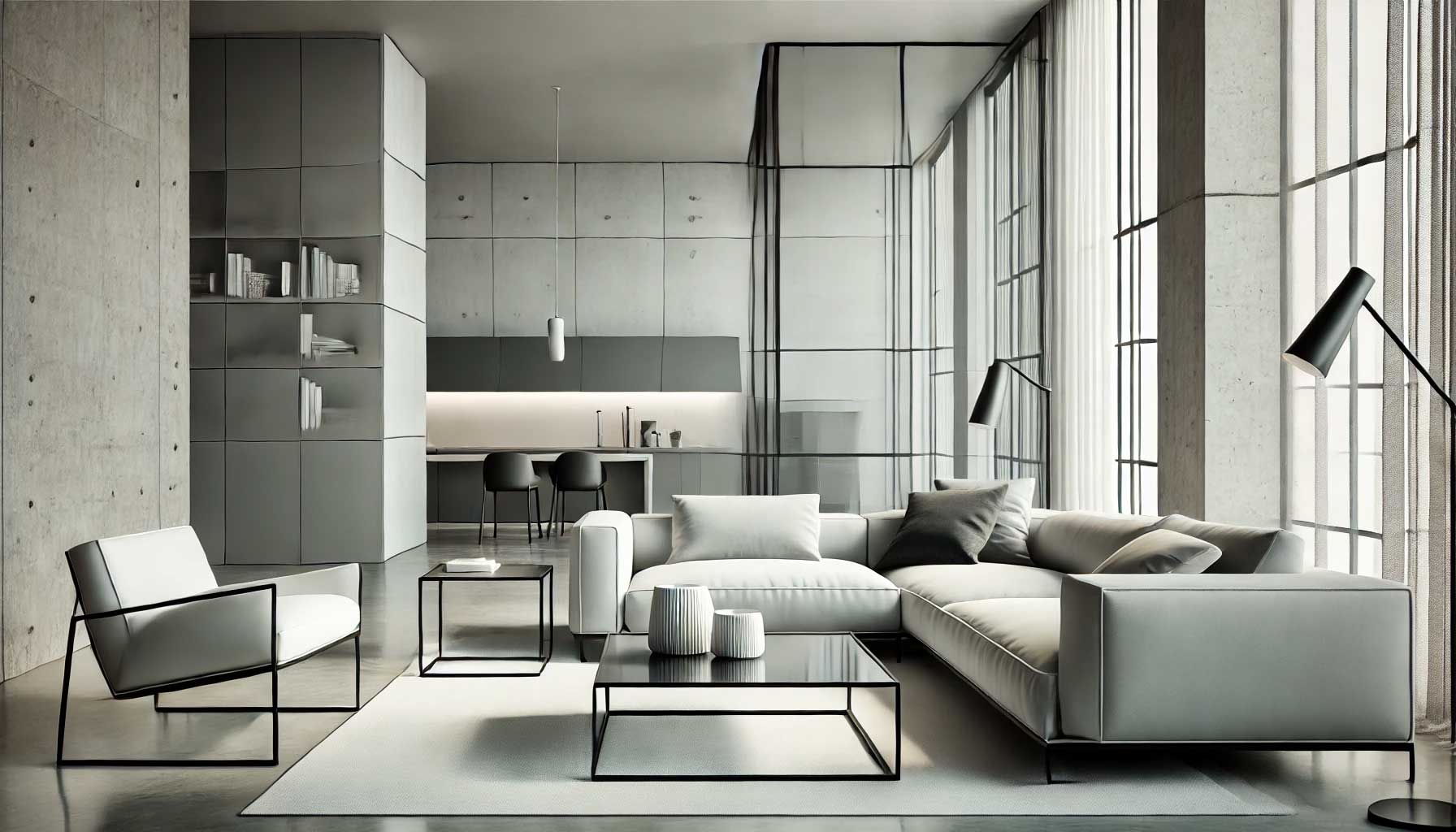
3. Traditional Interior Design Style
The traditional interior design style is all about elegance, classic details, and a sense of timelessness. Inspired by European décor from the 18th and 19th centuries, this style creates a warm and welcoming atmosphere with its rich textures and refined touches.
Key Features:
- Symmetry: Traditional design emphasizes balance, often with matching furniture pieces and symmetrical room layouts.
- Rich textures and patterns: Fabrics like velvet, silk, and brocade are commonly used, along with floral or damask patterns.
- Elegant, formal furniture: Dark wood finishes, intricate carvings, and vintage-inspired pieces are hallmarks of traditional design.
If you love spaces that feel grand and timeless, traditional design may be ideal for you. It works particularly well in homes with high ceilings, large windows, and architectural details like crown molding or wainscoting. While the style can feel more formal, it can be balanced with cozy elements like plush rugs and soft lighting to create a comfortable yet sophisticated space.
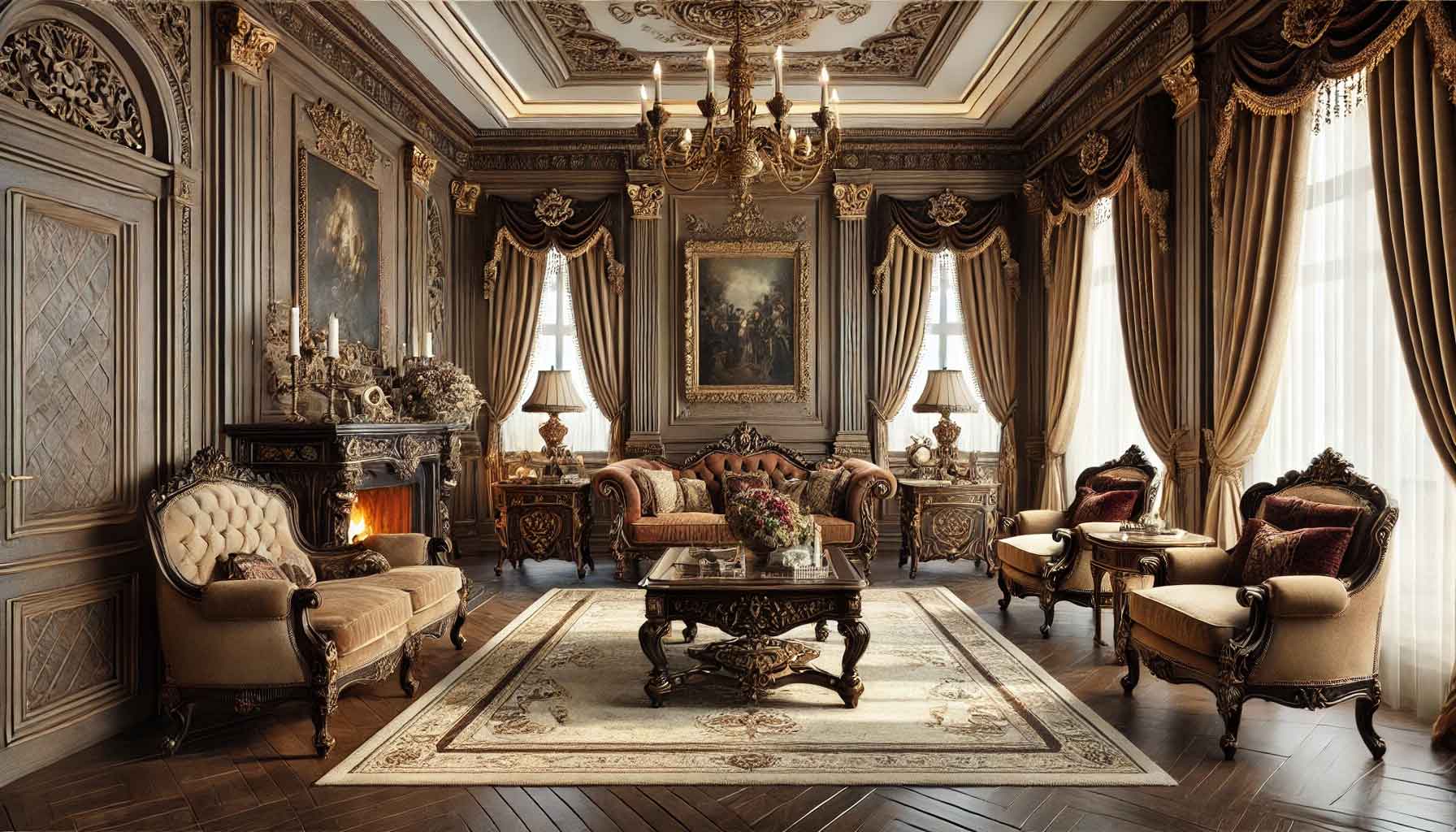
4. Contemporary Interior Design Style
Contemporary interior design is ever-evolving and reflects the trends of the current moment. While it shares similarities with modern design, it offers more flexibility, often blending elements from various styles to create fresh, trendy spaces. Contemporary homes are characterized by clean lines but allow for bold statements and creative expressions.
Key Features:
- Neutral and bold colors: Contemporary design tends to feature a neutral color base—such as white, gray, or beige—accented with bold splashes of color like deep blues, greens, or vibrant oranges.
- Mixed textures and materials: Contemporary homes often combine materials like metal, glass, and wood with soft textiles such as velvet or wool for added warmth.
- Eco-friendly choices: Sustainability is a core trend in contemporary design, with a focus on energy-efficient lighting, recycled materials, and organic textures.
Contemporary style offers the opportunity to play with contrasts. You can combine sleek, modern furniture with organic, natural elements, like a wooden coffee table or indoor plants, to create a balanced and inviting space. This style works in both large and small homes, depending on how you incorporate light and space-saving furniture.
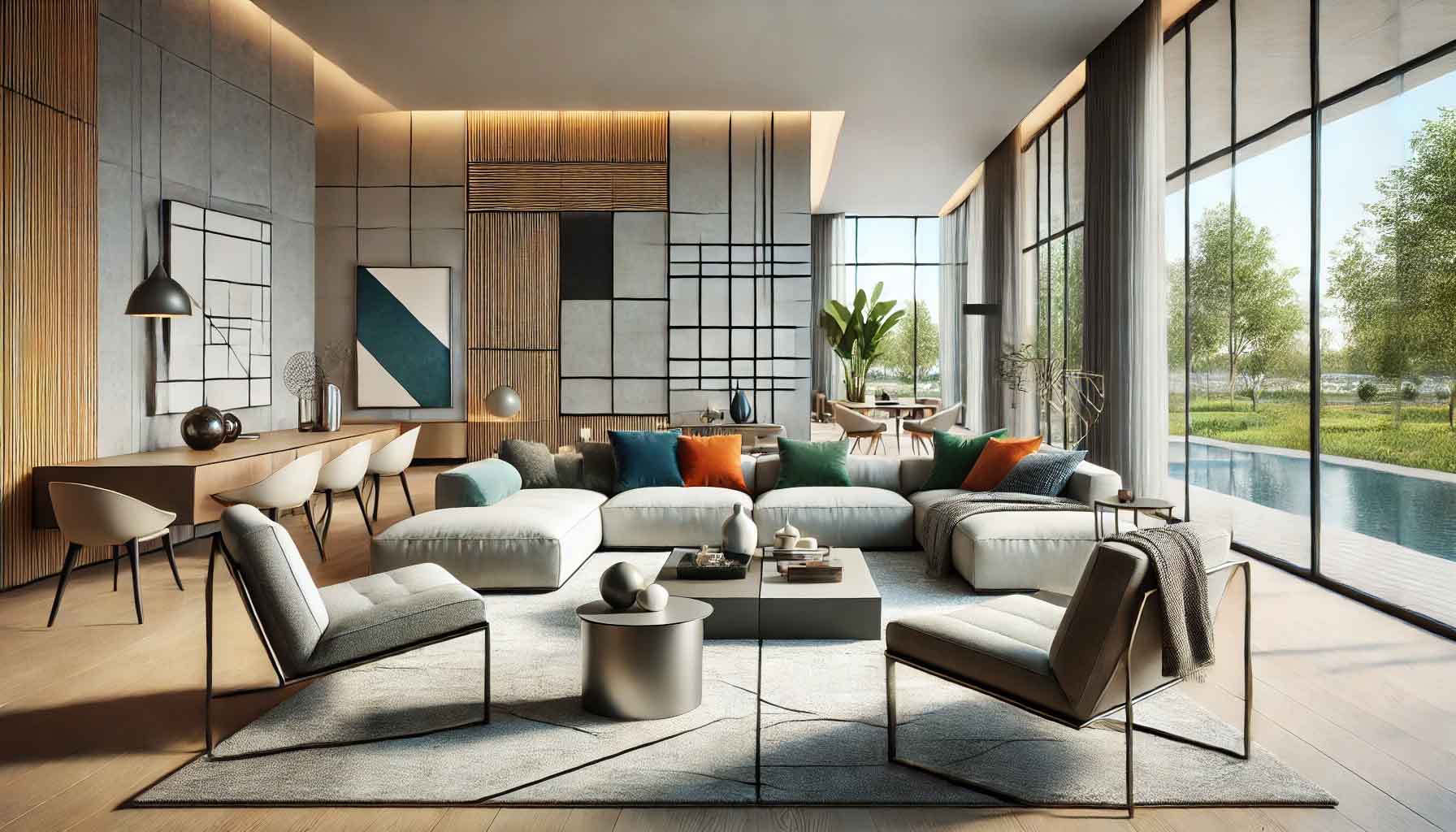
5. Scandinavian Interior Design Style
Scandinavian interior design is a minimalist style that values functionality, simplicity, and a connection to nature. Originating in Nordic countries, this design style is known for creating calm and airy spaces that feel warm and inviting, despite their pared-down aesthetic. It’s perfect for those who appreciate a clean, fresh look with a cozy touch.
Key Features:
- Light color palettes: White, light gray, soft blue, and beige dominate Scandinavian spaces, which helps reflect natural light and create an open, airy feel.
- Natural materials: Scandinavian homes often feature materials like wood, leather, and wool, giving the space warmth and texture.
- Functional furniture: Simplicity is key, with furniture designed to be both practical and aesthetically pleasing. Clean lines, wooden legs, and minimalist forms are common.
To achieve the Scandinavian look, focus on decluttering your space and using furniture and décor that have a purpose. Include plenty of natural light, neutral tones, and cozy textures, like knitted throws or sheepskin rugs. This style is particularly well-suited for small spaces, as it emphasizes efficiency without sacrificing beauty.
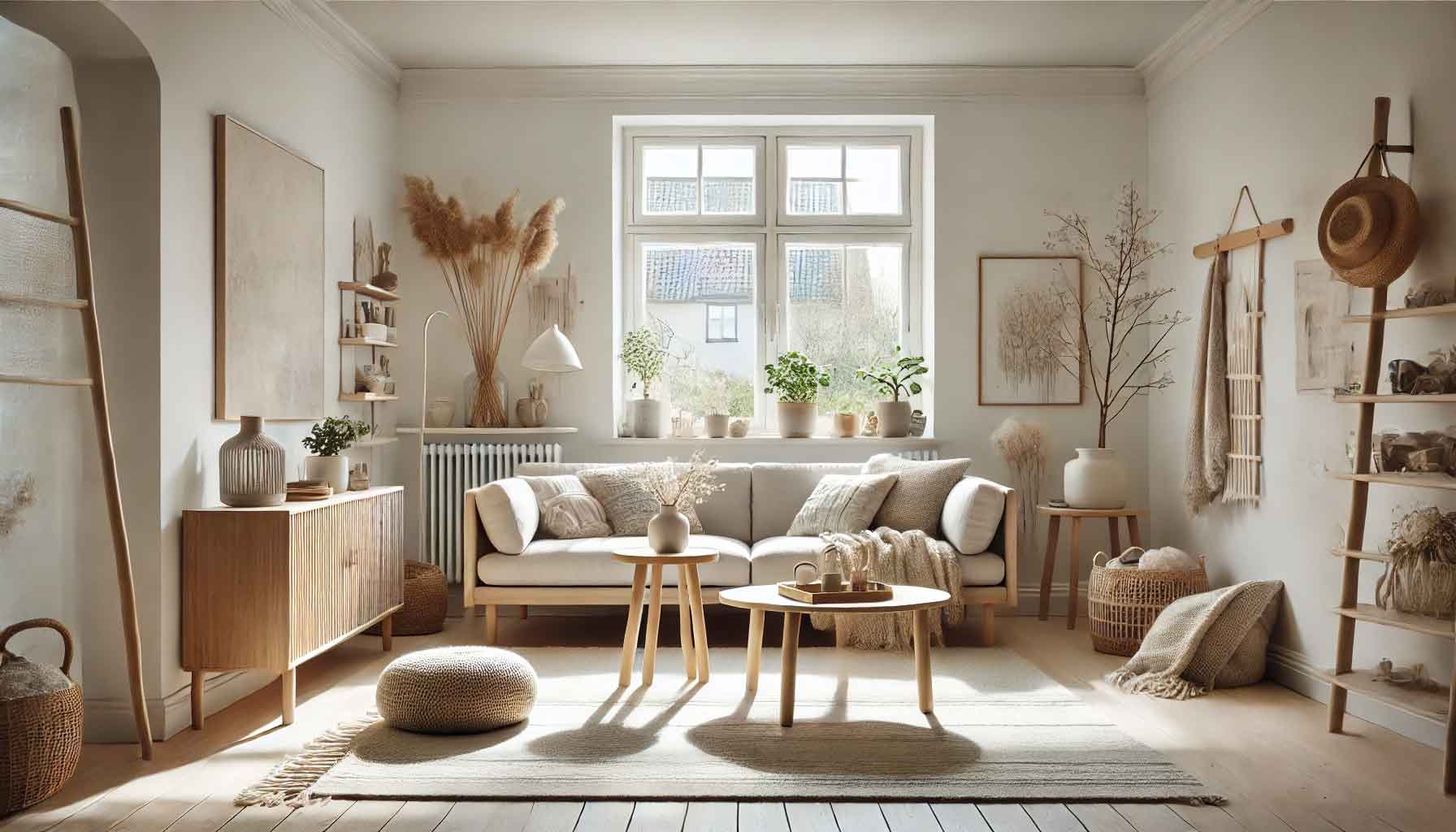
6. Industrial Interior Design Style
Industrial interior design is inspired by the look of old factories and warehouses, combining raw materials with functional furniture to create a rugged, edgy space. If you’re drawn to exposed brick walls, metal fixtures, and an overall unfinished look, industrial design might be for you.
Key Features:
- Exposed structures: Industrial homes often feature exposed beams, pipes, or brick walls that highlight the building’s architecture.
- Neutral, earthy tones: The industrial palette typically consists of shades of gray, black, and brown, often offset with metal finishes or wood textures.
- Functional and durable furniture: Industrial furniture tends to be sturdy and simple, with a focus on function. Think metal chairs, wooden tables, and leather sofas.
This design style works best in lofts, converted industrial spaces, or homes with high ceilings and large windows. However, it can also be adapted to smaller homes by incorporating industrial-style furniture, light fixtures, and accessories like metal shelving or vintage-inspired lighting. Adding soft accents like rugs or cushions can soften the look without detracting from the style’s bold character.
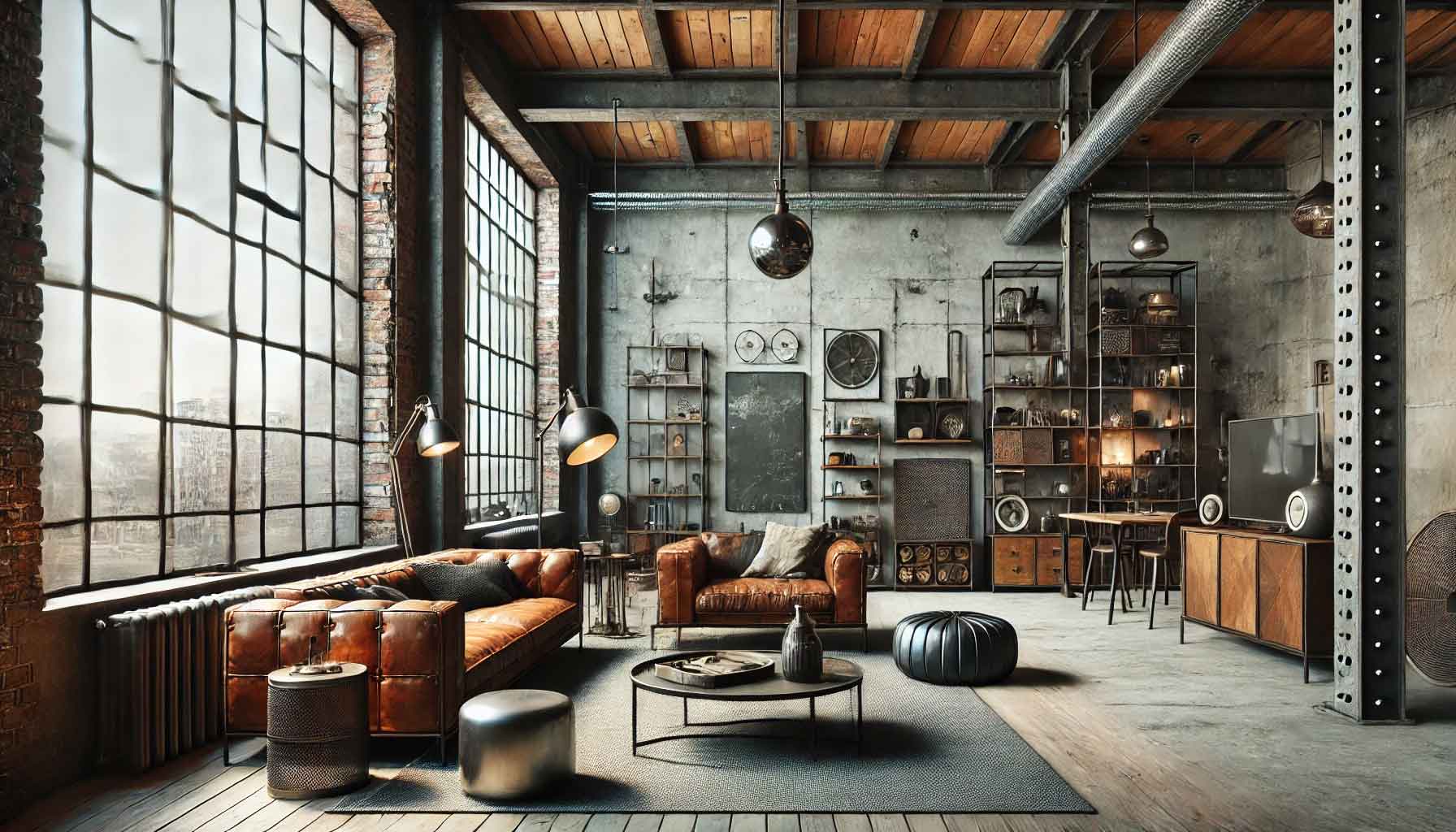
7. Bohemian Interior Design Style
Bohemian (or “Boho”) interior design embraces a free-spirited, eclectic mix of textures, patterns, and colors. It’s perfect for those who love to experiment and bring their personality into their space. Boho homes are often filled with an assortment of items from different cultures and eras, creating a relaxed and layered aesthetic.
Key Features:
- Rich, vibrant colors: Boho design features an array of colors, often earthy tones mixed with jewel-like hues such as deep purples, emerald greens, and burnt oranges.
- Layered textures: Layering is key to creating the Bohemian look—think woven rugs, tassels, throw pillows, and macramé, all adding warmth and comfort to the space.
- Mix of furniture and décor: There’s no uniformity in Boho design. Vintage pieces sit next to modern elements, and handcrafted items from around the world blend with plants and textiles.
If you’re drawn to a relaxed, lived-in vibe, Bohemian design is a great way to express your creativity. This style works well for those who like to collect unique, artistic pieces, and it’s easy to implement in any space. Plants, personal artwork, and sentimental items all contribute to the vibrant, eclectic feel of a Bohemian interior.
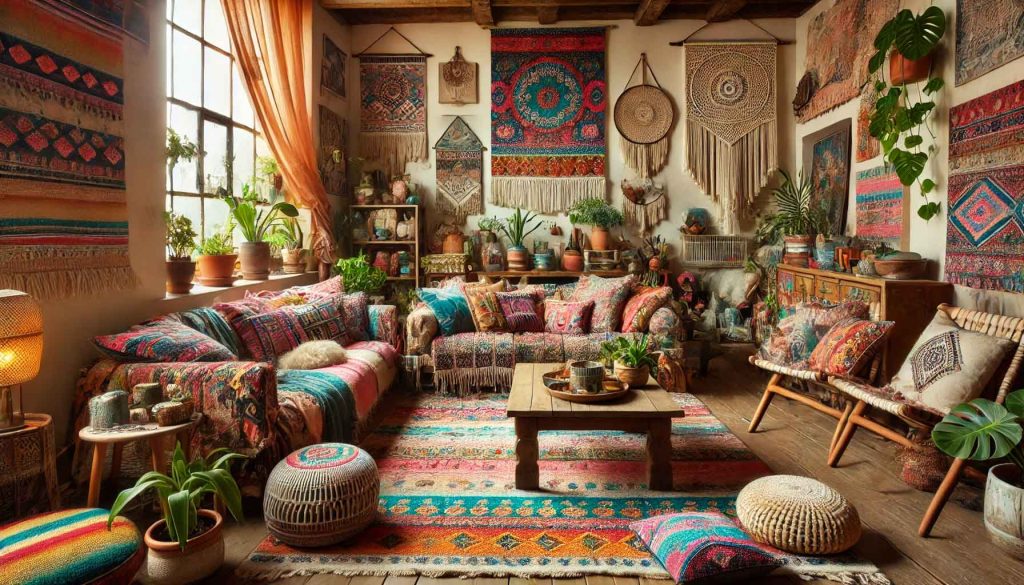
8. Mid-Century Modern Interior Design Style
Mid-century modern design draws inspiration from the 1950s and 60s, combining clean lines with organic shapes and a mixture of both traditional and modern materials. It’s a popular choice for those who want a retro feel that’s still functional and stylish in today’s homes.
Key Features:
- Streamlined furniture: Mid-century modern design focuses on functional furniture with clean, straight lines or slightly curved shapes. Wood and metal are often used for furniture pieces, and legs are typically angled or tapered.
- Bold accent colors: While the primary palette is neutral, you’ll find pops of color in the form of mustard yellow, burnt orange, teal, or olive green.
- Functional décor: Mid-century modern homes prioritize functionality. Pieces are minimal yet stylish, often featuring iconic designs like Eames chairs or Noguchi coffee tables.
This style works well in both small and large spaces, as its simplicity allows rooms to feel open and uncluttered. It’s also a versatile style that can be mixed with other design elements, such as industrial or Scandinavian, for a personalized take on retro design.
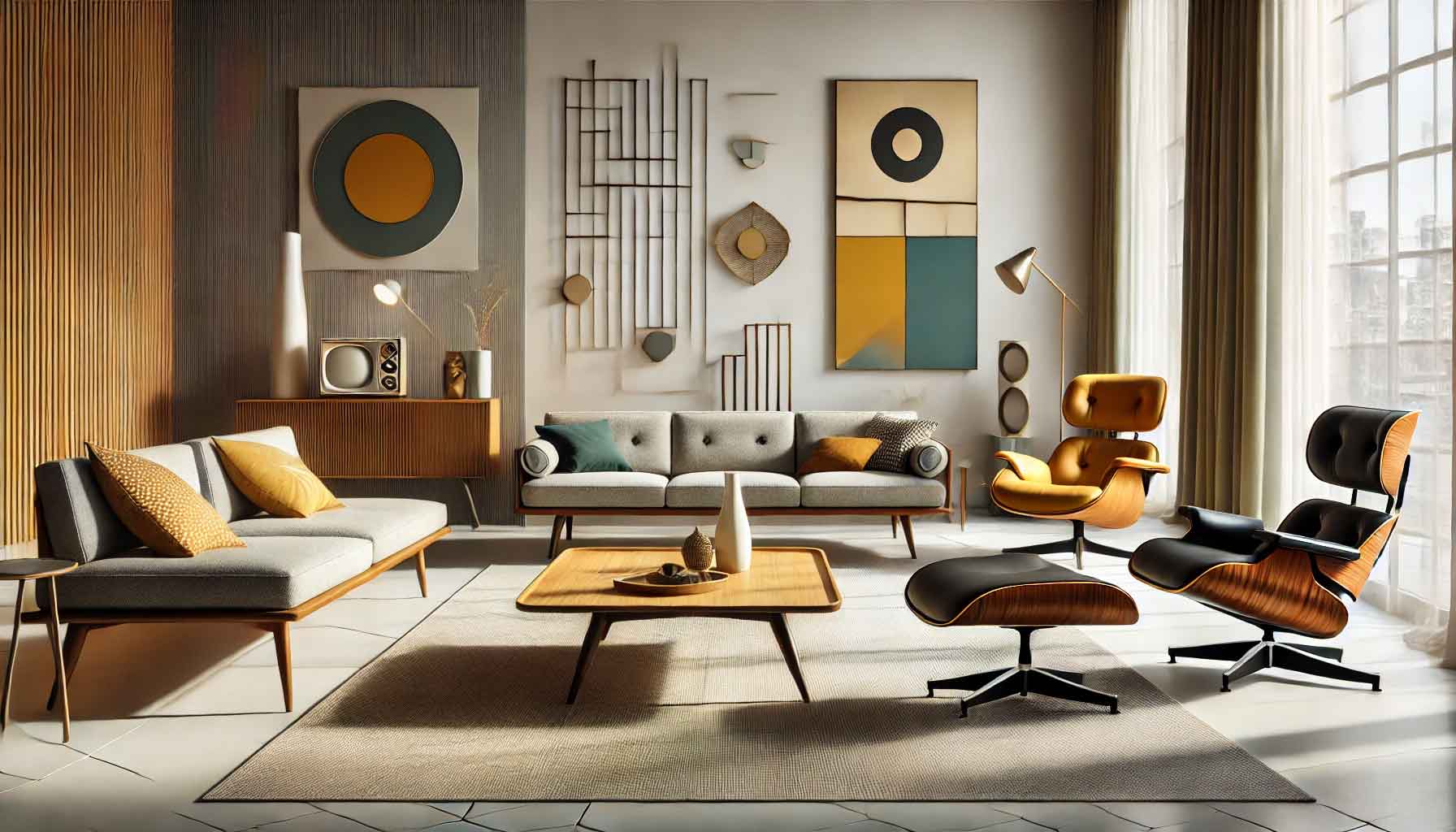
9. Minimalist Interior Design Style
The minimalist interior design style is all about simplicity and a “less is more” approach. Inspired by modern design, it eliminates unnecessary elements to create a clean, calming environment. If you prefer a clutter-free space where every piece serves a purpose, minimalism might be your perfect style.
Key Features:
- Neutral color schemes: Minimalist spaces often feature monochromatic palettes, with shades of white, gray, and black dominating the décor.
- Simple, functional furniture: Each furniture piece is chosen for its utility and aesthetic appeal, with sleek designs that prioritize function over form.
- Open, uncluttered spaces: Minimalist design focuses on creating open spaces with as few distractions as possible. Storage solutions, like built-in cabinets or hidden compartments, are often used to keep clutter out of sight.
To achieve the minimalist look, start by decluttering your home and only keeping what you truly need. Choose high-quality, multi-functional furniture and stick to a neutral color palette. Minimalist design can be especially helpful in small spaces, as it helps create the illusion of a larger, more open area. Remember, less is more!
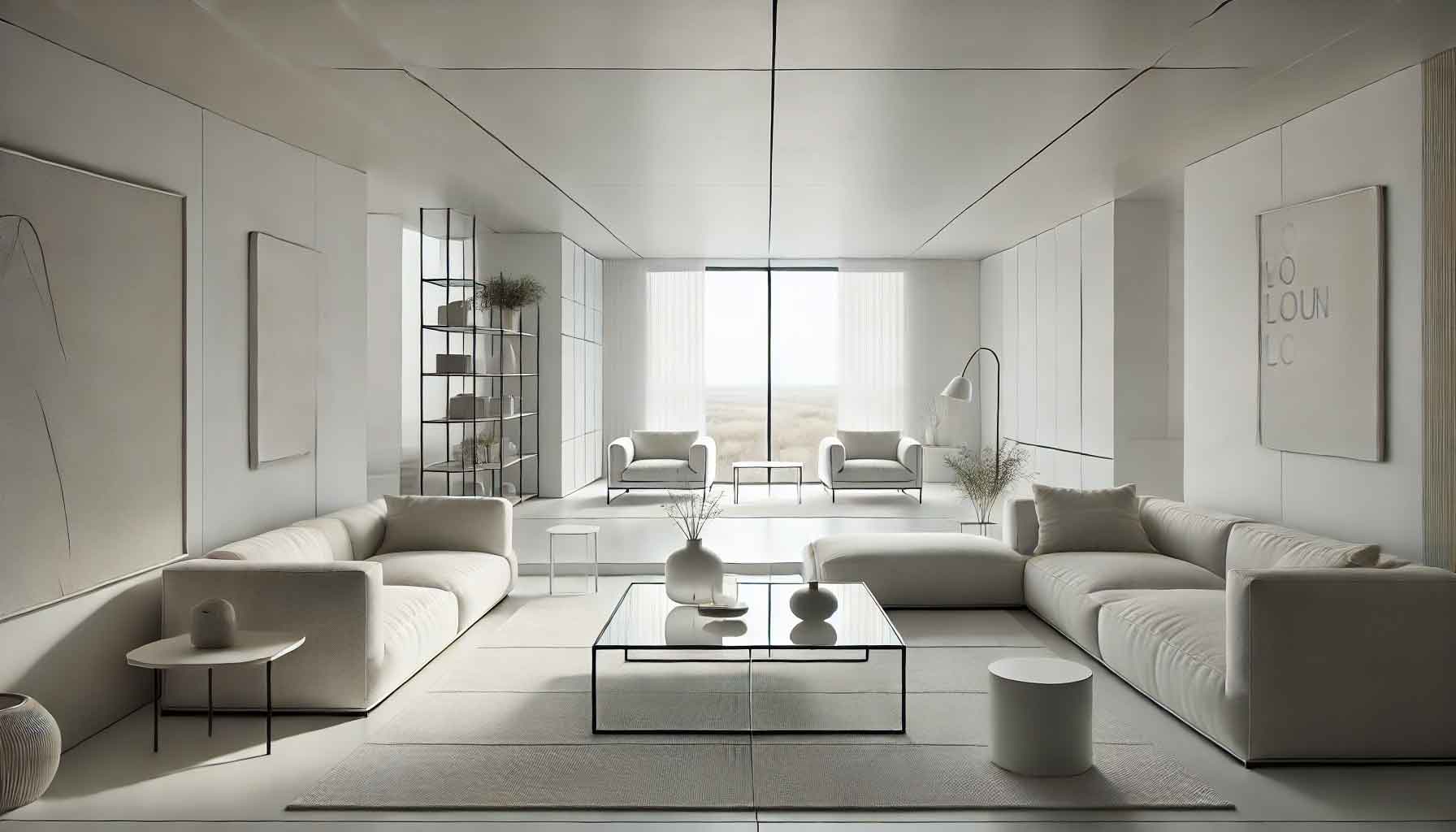
10. Rustic Interior Design Style
Rustic interior design embraces the natural beauty of aged materials, organic elements, and a cozy, lived-in feel. This style is perfect for those who appreciate the charm of the countryside and want to bring the warmth of nature indoors. Rustic spaces often feel unrefined yet comfortable, with a focus on natural textures and earthy tones.
Key Features:
- Natural materials: Wood, stone, and other raw materials are at the heart of rustic design. Exposed beams, wooden floors, and stone fireplaces are common elements.
- Earthy color palettes: The color scheme typically includes shades of brown, beige, cream, and other neutral tones that mimic nature.
- Handcrafted décor: Rustic homes often feature handcrafted or vintage items, such as weathered wood furniture, woven baskets, or reclaimed materials.
To achieve a rustic look, focus on bringing nature indoors. Use plenty of wood, whether in the form of exposed beams, floors, or furniture, and complement it with soft fabrics like linen, wool, or cotton. Rustic design works particularly well in homes with open floor plans, large windows, or high ceilings, but it can be adapted to any space by incorporating the right materials and textures.
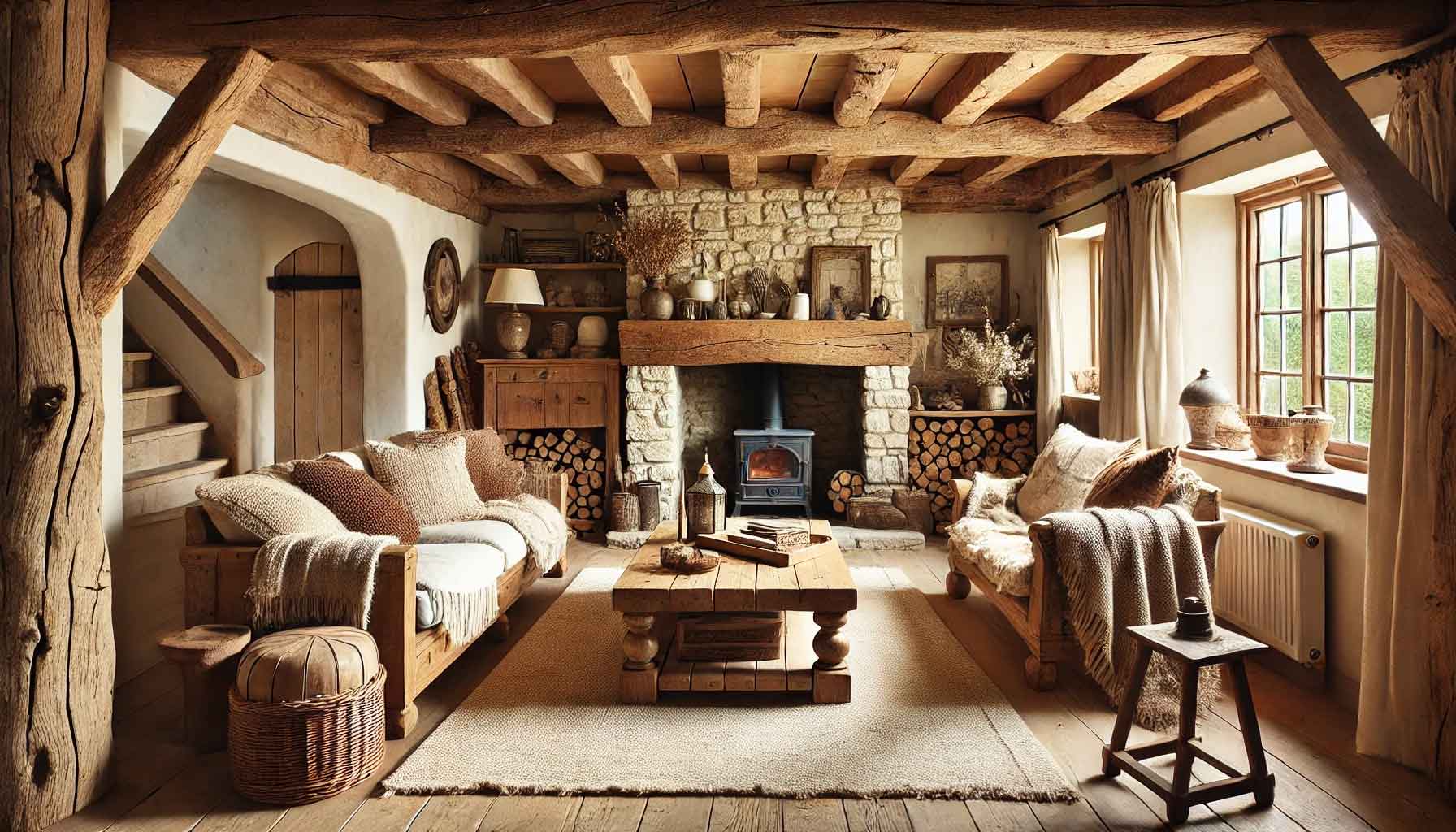
11. Coastal Interior Design Style
Coastal interior design is inspired by the beach and the ocean, creating a relaxing, breezy atmosphere reminiscent of seaside living. Even if you’re not near the coast, you can bring that light and airy feel into your home with the right colors and décor choices.
Key Features:
- Light, airy color schemes: Coastal design typically features soft, light hues like white, beige, sand, and sky blue, often paired with natural textures such as driftwood or jute.
- Natural materials and textures: Light woods, rattan, wicker, and linens help create an organic feel that mimics the natural seaside environment.
- Ocean-inspired décor: Nautical elements like seashells, beachy artwork, and striped patterns are common in coastal homes.
To bring the coastal look into your space, focus on maximizing natural light and using soft, breezy fabrics like sheer curtains. Incorporate beach-inspired textures and accessories, such as light wood furniture, jute rugs, or blue and white striped pillows. Coastal design works well in both large and small spaces, offering a tranquil, refreshing environment.
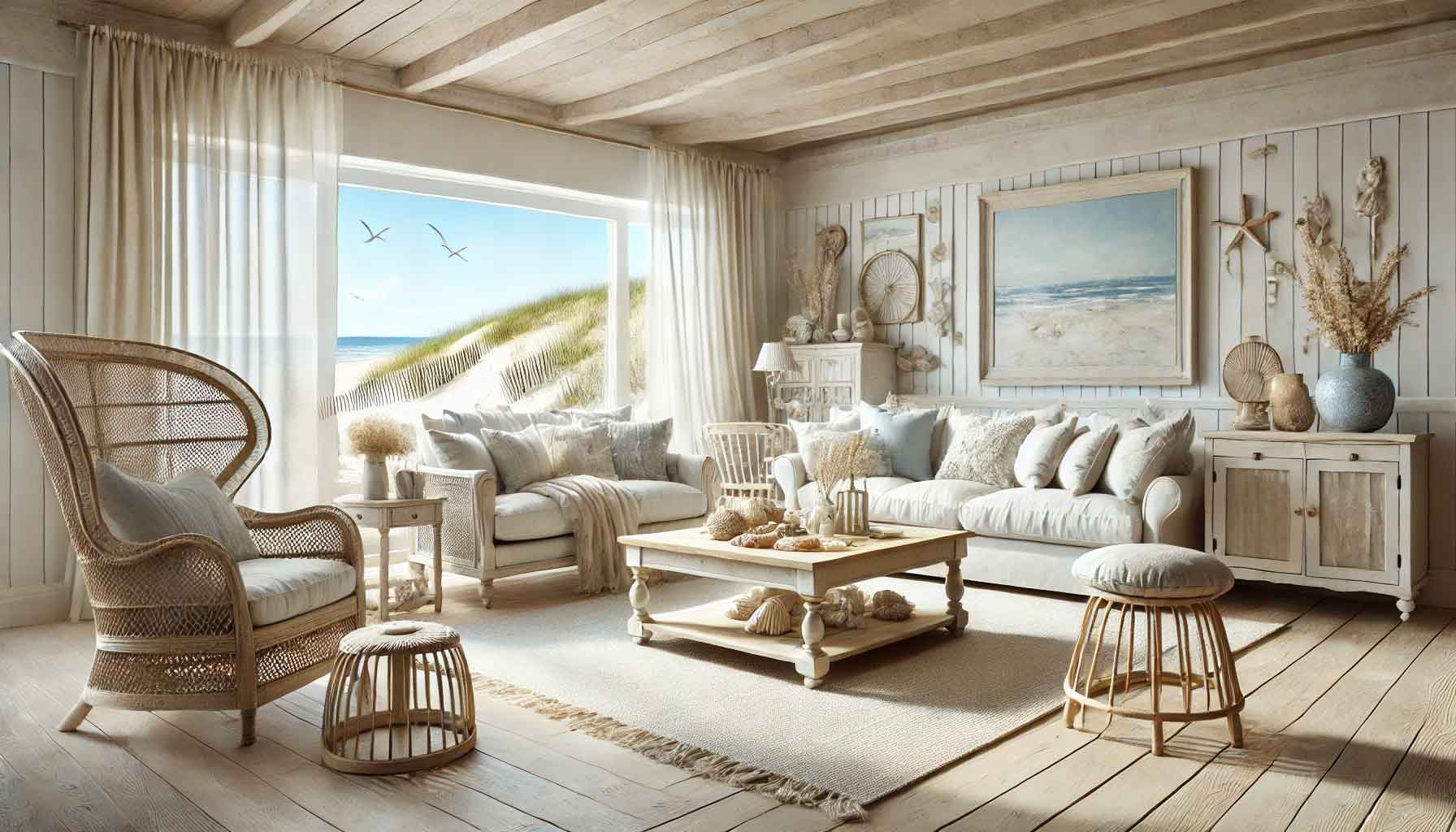
12. Transitional Interior Design Style
Transitional interior design combines the best of both traditional and contemporary styles, creating a look that’s both timeless and current. It’s perfect for those who appreciate the elegance of traditional décor but want something more updated and less formal. Transitional design blends old and new elements seamlessly, often using a neutral color palette to create a cohesive look.
Key Features:
- Neutral color schemes: Transitional homes often stick to neutral tones—such as beige, taupe, gray, and ivory—which provide a calm and elegant backdrop.
- Mix of traditional and modern furniture: Furniture pieces are typically a blend of classic shapes with modern finishes, offering the comfort of traditional styles with the sleekness of contemporary design.
- Balanced décor: Transitional spaces avoid the overuse of ornate details from traditional designs and the stark minimalism of modern design, striking a balance that feels comfortable and sophisticated.
Transitional design is ideal for homeowners who want to strike a balance between classic and contemporary. To achieve this look, choose neutral, calming tones and mix traditional pieces with more modern décor elements. This style works well in any space, offering flexibility and the opportunity to blend old favorites with modern trends.
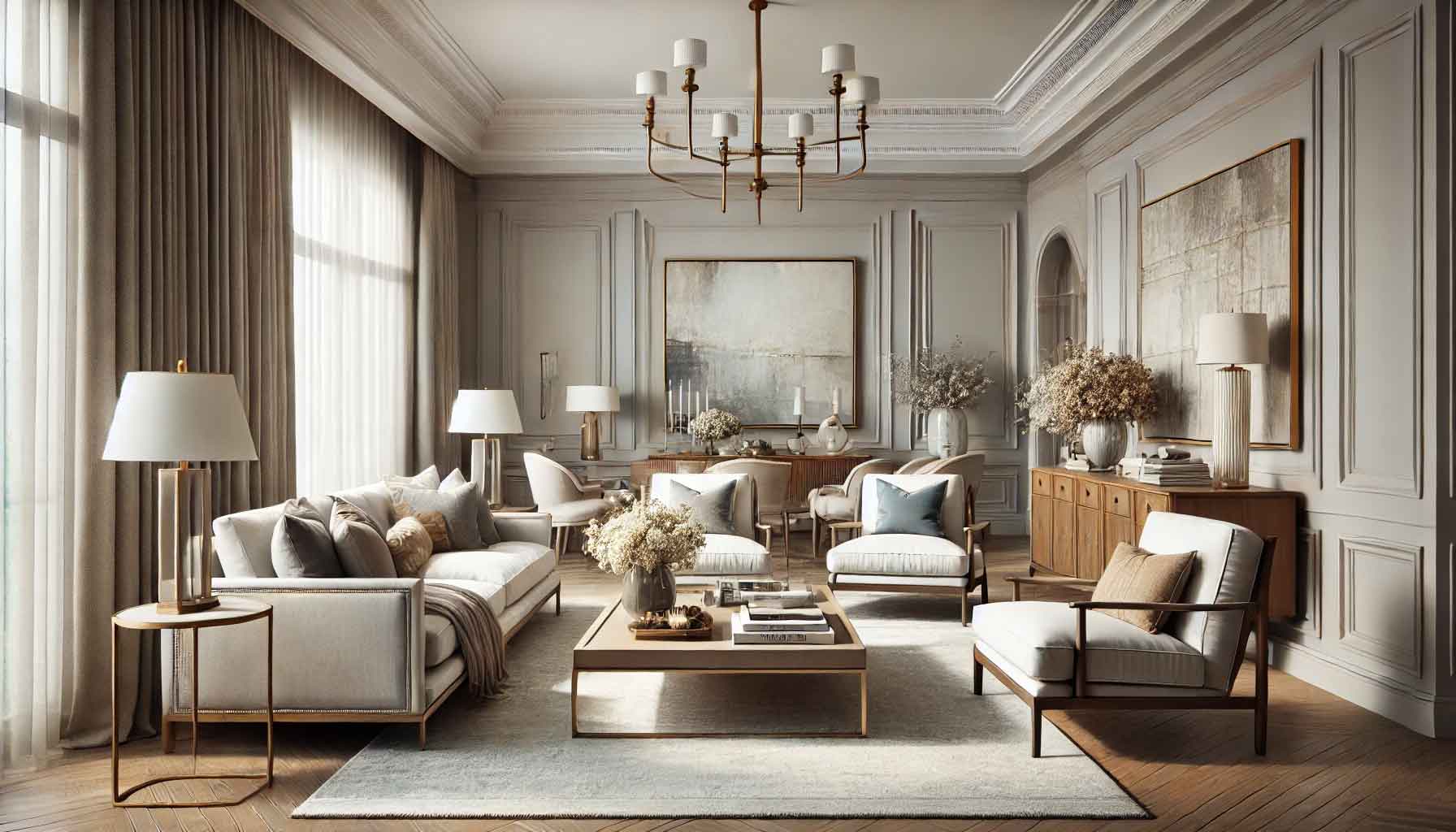
13. Art Deco Interior Design Style
Art Deco interior design is a glamorous, bold style that originated in the 1920s. Known for its opulence, geometric patterns, and luxurious materials, Art Deco is perfect for those who love a dramatic, elegant look. The style reflects a fascination with modernity, machinery, and luxury, often incorporating metallics and rich colors.
Key Features:
- Geometric shapes and patterns: Art Deco is famous for its strong geometric motifs, such as zigzags, chevrons, and sunburst patterns.
- Luxurious materials: Materials like velvet, marble, glass, and chrome are common in Art Deco interiors, creating a rich, lavish feel.
- Bold, contrasting colors: Art Deco often features a dramatic color palette with deep hues like black, emerald green, gold, and royal blue.
If you want to incorporate Art Deco into your home, look for statement pieces like a bold, geometric rug or a mirrored coffee table. Incorporate rich colors and metallic finishes in your furniture and lighting fixtures. Though this style is dramatic, it can be balanced with simple furniture to avoid overwhelming the space.
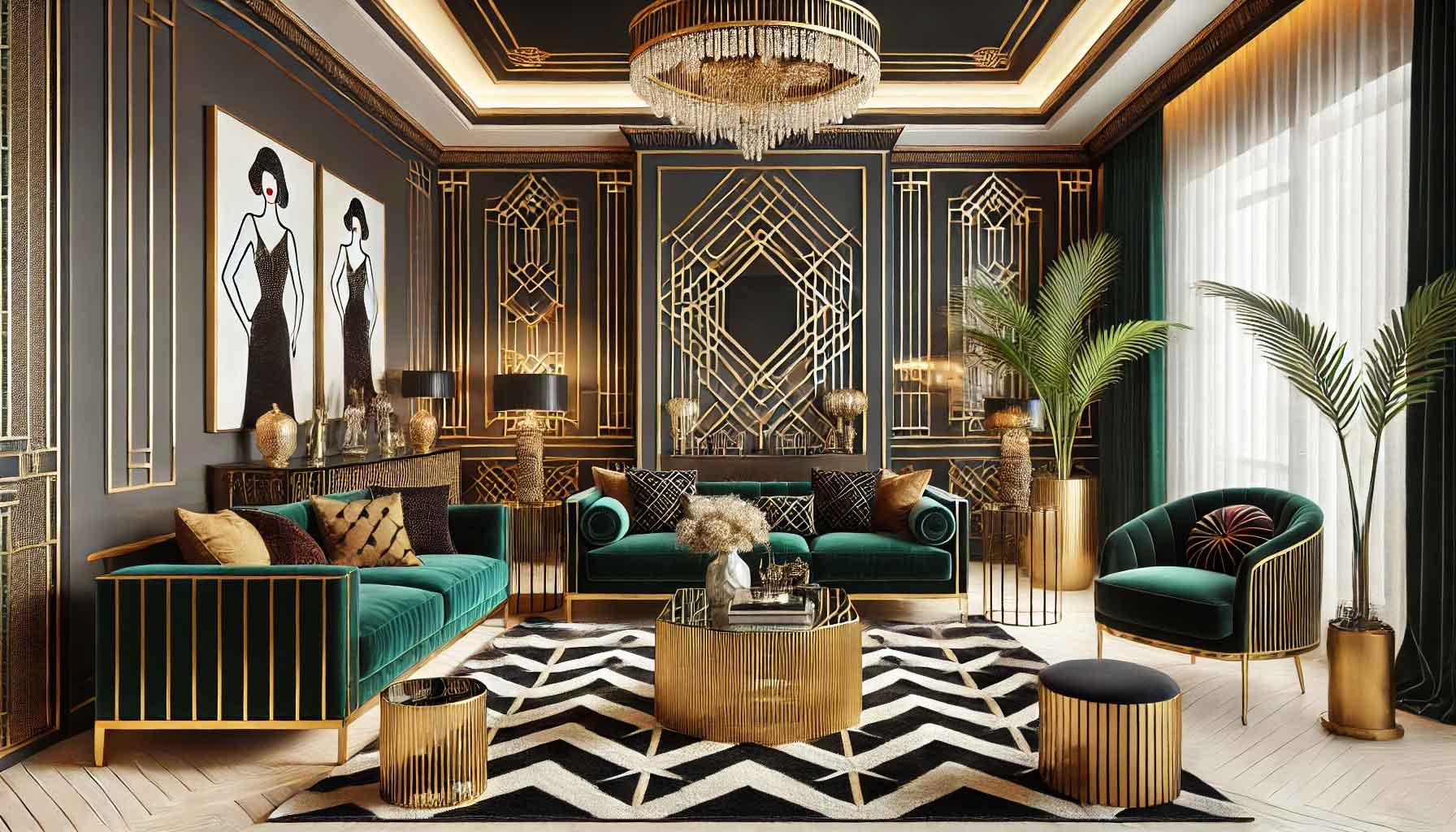
14. Tips to Discover Your Personal Design Style
With so many interior design styles to choose from, it can be challenging to pinpoint which one resonates with you the most. Here are some tips to help you discover your personal design style:
- Analyze your lifestyle: Consider how you use your space. Do you host often, or is your home a private retreat? Your lifestyle will influence whether you lean toward open, communal spaces or cozy, intimate areas.
- Create a mood board: Gather inspiration from magazines, websites, or platforms like Pinterest. Collect images that reflect the colors, furniture, and décor that you’re drawn to, and notice any common themes that emerge.
- Visit showrooms and take style quizzes: Many interior design websites offer style quizzes to help you define your preferences. Additionally, visiting furniture showrooms can give you a feel for different styles and how they come together in a space.
- Don’t be afraid to mix styles: Many homes successfully blend two or more styles. For instance, you can create a cozy, rustic-industrial vibe or mix modern and Boho elements. The key is balance and ensuring the pieces complement each other.
By taking these steps, you’ll gain a clearer understanding of the design style that fits your personality, lifestyle, and home. Ultimately, your space should reflect who you are and make you feel comfortable and inspired.
15. Current Interior Design Trends to Consider
Interior design trends are constantly evolving, and while choosing a timeless style is essential, it’s also fun to incorporate current trends that make your home feel fresh and up-to-date. Here are some of the most popular trends in interior design today:
- Sustainable and eco-friendly design: More homeowners are choosing environmentally conscious materials, such as recycled wood, bamboo, and energy-efficient lighting.
- Biophilic design: This trend focuses on connecting interior spaces with nature by incorporating natural materials, indoor plants, and large windows that let in natural light.
- Smart home technology: The integration of smart technology, from lighting and thermostats to security systems, is becoming a key feature in modern homes.
- Curved furniture and organic shapes: Moving away from sharp angles, this trend embraces soft curves in furniture design, creating a more relaxed and flowing space.
These trends can be incorporated into any style, from modern to traditional, and can enhance the functionality, comfort, and aesthetic appeal of your home. Whether you choose to go green with eco-friendly materials or add a touch of biophilic design with houseplants, these trends can make your space feel modern and refreshing.
Conclusion
Choosing the right interior design style is all about finding what resonates with you and suits your lifestyle. Whether you’re drawn to the clean lines of modern design, the rustic charm of natural materials, or the bold statement of Art Deco, there’s a style for everyone. Remember to focus on the elements that make you feel at home, and don’t be afraid to mix and match styles to create a space that is uniquely yours. With the right approach, you can transform any space into a beautiful, functional, and personalized retreat.
FAQs
1. How do I choose the right interior design style for my home?
Start by considering your personal taste, lifestyle, and how you use your space. Create a mood board of design styles you like and visit showrooms for inspiration. Pay attention to the colors, textures, and furniture you are naturally drawn to.
2. Can I mix multiple interior design styles?
Yes, many homeowners successfully blend two or more design styles. The key is balance—ensure the elements complement each other rather than clash. Transitional design is an example of a popular style that blends traditional and contemporary elements.
3. What are some current interior design trends?
Sustainable materials, biophilic design, smart home technology, and curved furniture are some of the hottest trends in interior design today. These trends can be integrated into any home to create a modern and functional space.
4. What is the difference between modern and contemporary design?
While both modern and contemporary styles focus on clean lines, modern design refers to a specific era (the mid-20th century), whereas contemporary design evolves with current trends, offering more flexibility in terms of materials, colors, and shapes.
5. How can I make a small space look bigger with interior design?
Use light colors, minimalist furniture, and clever storage solutions to create an open and airy feel. Mirrors, multifunctional furniture, and well-placed lighting can also help make a small room feel larger.

